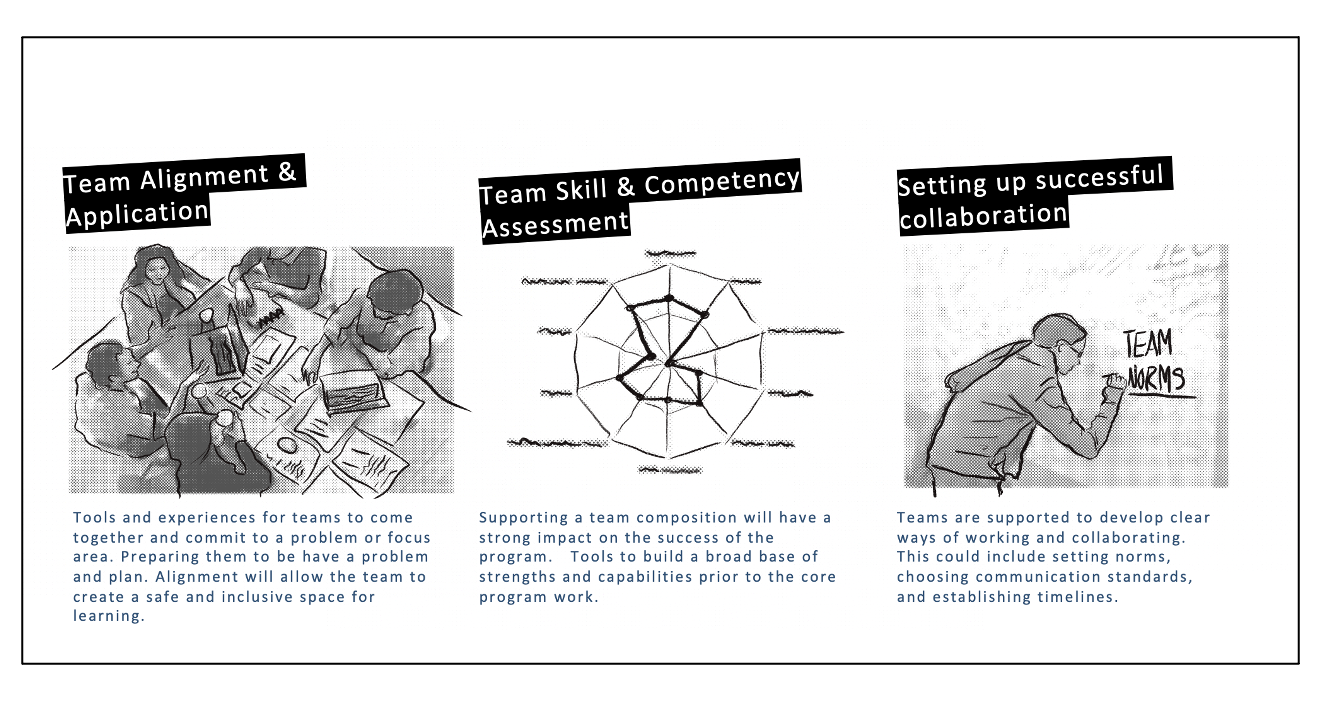University of Victoria
Curriculum by design.
Our partnership with University of Victoria started by surprise, which actually happens quite often. On this occasion, one of the business students at University of Victoria was looking for a summer internship. To learn more about hiring policies, we were introduced to Kate Donovan, Director of Administration for Undergraduate programs.
After our discussion with Kate, we quickly saw an opportunity for a bigger partnership and we were connected to Saul Klein, Dean at the University of Victoria. Several conversations later and we were connected to Vivien Corwin and Cheryl Mitchell and Sheryl Karras to help redesign their MBA program, and to build a new Masters of Management.

Building with, not for people.
Developing the next generation of leaders requires that students graduate with the skills and mindsets needed to “create a better world together.”
University of Victoria agrees with us that organizations are highly complex and often messy. To build better workplaces and create better societal outcomes, we need not only technical expertise, but also the ability to collaborate, and the willingness to experiment and learn by doing.
This case study will be of interest to instructors looking for innovative ways to approach their own course development, along with faculty members, program administrators and industry interested in working collaboratively to ensure curricula remains relevant and useful in an increasingly turbulent business environment.

Focused on partnership with industry, students and academia.
Our work started by meeting with all the leaders and mapping organizational goals to their relationships inside and outside of the University including industry, philanthropy, research partners and most importantly their students.
Designing the program.
The next phase of the project was designing and prototyping new learning materials and approaches that would engage students and industry partners in a different type of learning experience.
An experience that allows for the inclusion of a variety of different voices, encourages prototyping and experimentation, shifting the focus from an emphasis on teaching to an emphasis on learning by making or doing.
Coaching
The fun part.
University of Victoria already had amazing faculty and staff that provide academic learning opportunities for students in areas such as leadership, change management and strategy. Our role was to provide some hands on experience and coaching to students on real problems that they could apply and test with participating organizations.
Our design coaches and mentors challenged students to envision and execute on designing a financially viable business model for a socially-purposed organization. Functional skills were developed in areas such as market discovery, interviewing, financial modelling, marketing and sales, planning and budgeting, and so on. In addition, students built confidence that they can apply their skills in the real world.
Throughout the program, students worked in on actual problems faced by sponsor organizations made up of some of our own clients, they wrote short reflections and/or essays. These writings became artifacts in the study of the feasibility, limits and scalability of the various academic learning throughout the program.
J5 coaches and mentors held regular meetings with students to engage in discussions about strategies and business models. From our perspective, these meetings provided students with dedicated time with our experts, providing critical context and insight validating the importance of balancing academic theory and the application of knowledge in an industry context.


